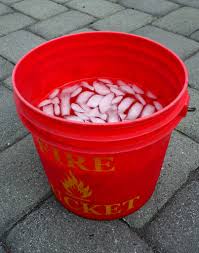Buckets of Money

September 4, 2016
September 8, 2016
We all remember the Ice Bucket Challenge back in 2014. The entire world seemed to dump that bucket of ice-cold water over its head at once. It had its critics, people who thought it was silly to waste that much water. The shivers down our backs were for a good cause, though; all the money raised went to research for a terrible disease called ALS. Now, the world’s work has paid off. Thanks to the money raised by this challenge, scientists have found a few of the genes that cause it.
Amyotrophic lateral sclerosis (ALS) is a neurological disease that causes muscle to degenerate, causing them to be unusable. According to the ALS Association, once diagnosed, a victim is expected to live two to five years. Around 20,000 people in the US have it. Physicist Stephen Hawking is perhaps the most famous patient of the disease. He was diagnosed at twenty-one years old, and is currently seventy-four. His case is rare in that he has lived so long with it. Lou Gehrig, a famed baseball player, also lived with it. When he was diagnosed, the disease was near unheard of, and thus its nickname was born: Lou Gehrig’s Disease.
In 2014, the Ice Bucket Challenge appeared. A person would be nominated, and within twenty-four hours, they had to make a video accepting the challenge and pouring a bucket of ice water over their heads, and then would nominate friends to keep the cycle going. After uploading the video, participants were supposed to donate a sum of money to ALS research. This phenomenon raised money, as well as awareness. Everyone was talking about it. The ALSA reports that within an eight-week period in 2014, $115 million dollars were donated, and $77 million of that went directly to research. Several celebrities participated, including Eddie Redmayne, who played Stephen Hawking in the Oscar-winning movie The Theory of Everything about the scientist’s life. Other celebrities got in on the action, including Selena Gomez, Fall Out Boy, and Taylor Swift, among others. Stephen Hawking himself also took part in a modified version, in which his children took the ice. In the United Kingdom, ALS is referred to as Motor Neuron Disease, and its organization is called the Motor Neuron Disease Association.
“I urge everyone to donate to the MNDA to eliminate this terrible disease,” he said in his video. He was in his motorized wheelchair and wrapped in a blanket, explaining that he could not accept the challenge himself on account of his pneumonia the year before. He described his children’s choice to take his place as “gallant”.
Now, as of 2016, three new genes linked to ALS have been discovered since the onset of the challenge, but research still continues. The Ice Bucket Challenge isn’t just a two-year-old fad; people are still participating and donating. People are aware of this disease now, and realize how truly awful it is. Action to combat it is showing no sign of stopping.
So what does that mean for us? In the simplest terms, it means we’ve saved lives. The majority of participants in the challenge were teenagers or young adults, so we as students can appreciate this news. This is a victory for the world, but specifically for our generation. However, no matter how much pride we feel, we have to remember that this victory, above all else, belongs to victims of ALS and their families. ALS still isn’t cured, but every dollar helps. In two years, we’ve taken giant strides towards that goal. It can be done, if we all do our part. To everybody who has ever done the Ice Bucket Challenge, thank you. You’ve done something great. To someone out there, this is personal. One day, we can honestly say that we’ve saved thousands of lives.











